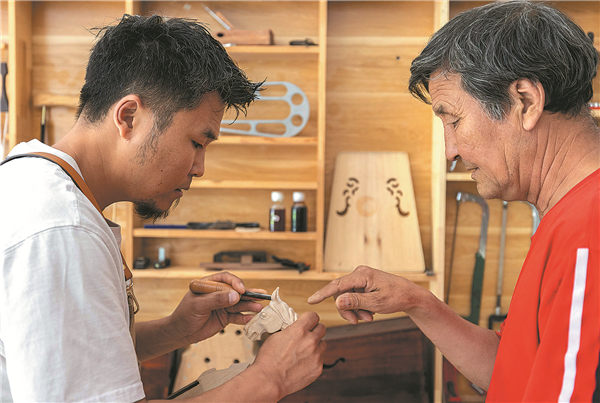

Musical magic
According to a report by the Inner Mongolia Intangible Cultural Heritage Protection Center, the history of the morin khuur can be traced back to the Tang (618-907) and Song (960-1279) dynasties, and it became popular during the time of Genghis Khan (1162-1227).
As the world evolves, and modernity encroaches upon ancient traditions, the morin khuur is a steadfast reminder of the enduring spirit and rich cultural tapestry of ethnic Mongolians. Its melodies echo through time, carrying with them the stories, dreams, and aspirations of a people deeply connected to their land, their horses, and to each other.
The instrument's lasting appeal can be attributed to the efforts of dedicated artisans.
Ulji, a 65-year-old morin khuur maker, whose name means "lucky" in Mongolian, is helping to preserve its rich heritage through his dedication to the craft.
The owner of a morin khuur workshop in Hohhot, capital of the Inner Mongolia autonomous region, Ulji has about 3,000 orders annually from home and abroad, mostly from professional musicians and music lovers.
He says that the instrument's captivating sound, which resonates with the vastness of Inner Mongolia's landscape, is central to its allure. Played with a bow, it produces haunting melodies that evoke the nomadic spirit and reflect the area's natural beauty.
Ulji was drawn to the instrument as a child, thanks to his father and grandfather, who were both morin khuur makers.
"They also played instruments, like the morin khuur and the sihu, a bowed instrument with four strings, and I often listened to the songs they performed at home," says Ulji, who was born and brought up in the Ar Horqin Banner in Chifeng, Inner Mongolia.